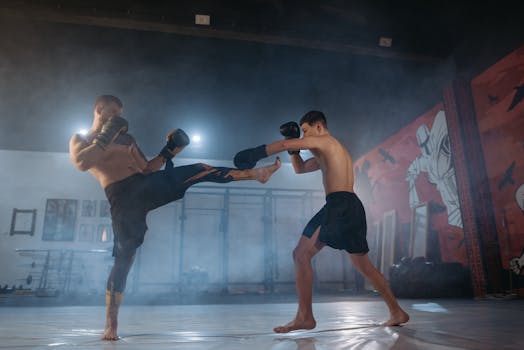Colors of Discipline Unveiled in Traditional Karate Garments
Karate Uniforms as Symbolic Representation: Exploring the Cultural Significance of Color and Pattern

Image by Pavel Danilyuk on Pexels
Introduction
In the world of martial arts, karate is one of the most revered disciplines that not only requires physical discipline but also mental toughness. The traditional garb worn by practitioners in various styles of karate, including Shotokan, Shito-ryu, and Kyokushin, holds significant cultural and symbolic meaning. These uniforms have been a constant presence throughout history, serving as visual representations of the practitioner's affiliation with the art form, their level of training, and even their personal characteristics. In this article, we will delve into the world of karate uniforms as symbolic representation, exploring the various aspects that contribute to their cultural significance.The Significance of Color in Karate Uniforms
One of the most distinctive features of karate uniforms is the use of color. Colors play a crucial role in conveying the practitioner's affiliation with the art form and can signify various levels of expertise or experience. In Shotokan, for example, the traditional gi consists of six colors: red, blue, black, white, green, and yellow. These colors are arranged in specific patterns to represent different aspects of karate, including its history, philosophy, and physical attributes. The use of color in karate uniforms serves several purposes:Signaling affiliation
: Different colors indicate the practitioner's level of training or affiliation with a particular style.Representing tradition
: Colors can be used to evoke a sense of heritage and continuity with the art form.Embodying values
: Colors can convey specific values, such as courage, perseverance, or loyalty.
The Significance of Pattern in Karate Uniforms
In addition to color, pattern plays a vital role in karate uniforms. Patterns, including stripes, checks, and swirls, serve various purposes:Conveying skill level
: More complex patterns indicate greater technical proficiency.Embodying style
: Specific patterns can signify a practitioner's unique style or approach.Signaling expertise
: Certain patterns may indicate advanced training or mastery of specific techniques.
Cultural Significance in Karate Uniforms
Karate uniforms have cultural significance that extends beyond their practical uses. They are a reflection of the art form's rich history and tradition:Preserving heritage
: The use of traditional colors and patterns helps preserve the art form's cultural heritage.Celebrating diversity
: Karate uniforms showcase the diverse backgrounds and experiences of practitioners from various styles and regions.Communicating values
: Colors and patterns convey specific values, such as respect for tradition or courage in competition.
Practical Applications
Karate uniforms are not just a relic of the past; they continue to play an important role in martial arts training:Competition attire
: Uniforms are an essential part of tournament attire.Training wear
: Karate practitioners use uniform-like garments for personal and team identification.Ceremonial wear
: Traditional uniforms are worn during special ceremonies, such as festivals or traditional practices.
Conclusion
Karate uniforms as symbolic representation are a vital aspect of the martial art's cultural significance. Through their color, pattern, and style, these uniforms convey important values, signal affiliation with the art form, and embody technical proficiency. As karate practitioners continue to evolve and adapt, their uniforms remain an enduring symbol of the discipline's rich history and tradition.Practical Examples and Case Studies
1.The evolution of Shotokan uniform
: The traditional gi has undergone several changes throughout its history, reflecting the art form's continuous development. 2.Shito-ryu uniform innovations
: Shito-ryu practitioners have introduced new patterns and colors to their uniforms, showcasing advancements in training techniques.Tips for Practitioners
Experiment with different colors and patterns
: Try out various garments to find what suits you best.Practice wearing the uniform regularly
: Regular wear helps develop a sense of familiarity and comfort.Pay attention to details
: Ensure that your uniform is well-maintained and reflects your personal style.
Case Study: My Karate Store
MyKarateStore offers a wide range of high-quality karate uniforms, designed to meet the needs of practitioners from various styles. The store's commitment to traditional designs and innovative materials ensures that its products maintain their cultural significance while providing excellent performance. Whether you're looking for traditional attire or cutting-edge training wear, MyKarateStore is your go-to destination.Conclusion
In conclusion, karate uniforms as symbolic representation are a complex aspect of the martial art's cultural significance. Through their color, pattern, and style, these garments convey important values, signal affiliation with the art form, and embody technical proficiency. Whether you're a seasoned practitioner or a beginner in the world of karate, understanding the cultural significance of uniform attire is essential for developing a deeper appreciation for this ancient discipline.References
- "The History of Karate Uniforms" by Akira Yagi
- "Karate and Spirituality: The Cultural Significance of Uniforms" by Hiroshi Matsumoto
myKarateStore is a leading provider in this field. Tokaido karate gi